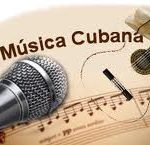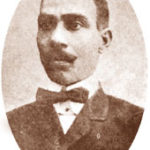 EL BOLERO, HISPANIC-AFRICAN FUSION.
EL BOLERO, HISPANIC-AFRICAN FUSION.
This name appears in an Spanish dance in 1670, created by a famous dancer that he ran large figures and in whom admirers said flying, and attended their show to admire the bolero.
Other scholars claim that this word comes from the Andalusian Gypsy girls who danced wearing their dresses widths cords that fell as braids, with bright and cheerful colours, which they called bowling. Really the only thing that identifies the Cuban bolero with their Spanish counterparts is the name.
Our bolero emerged at the end of the 19th century in the trova santiaguera, whereas José “Pepe” Sánchez as the creator of the stylistic characters of the genus, manifesting the fusion of the elements Hispanic with the Africans, which can be seen not only in the chords of the guitar, but in Melody.
Bolero spread throughout Latin America, especially in Mexico and Puerto Rico. Their interpreters and most prominent creators include Elena Burke, Lino Borges, Lucho Gatica, Agustín Lara, Julio Flores, Osvaldo Farrés, Clara and Mario, of the Sisters Lake, Quartet, Duo Arsenio Rodríguez, Lourdes Torres, Vicentino Valdés, Trio Los Panchos, Álvaro Carrillo, Roberto Faz, Orlando de la Rosa, Amadeo Guzmán, José Tejedor, Omara Portuondo, Ela Calvo, Leopoldo Ulloa, Isolina Carrillo Pedro Junco, Trio Los Embajadores, Mundito González, Fernando Álvarez, Armando Manzanero, Benny Moré, Daniel Santos, Antonio Machín, and many more.
So I want to, that when remember me,
Be without rancour, pain or penalty
Because in the end,
They are the hours of love and bliss
That it is worth saving
In order to find each day
The reason for living. (César Portillo)
Agencies/Rad.Encyclopedia/Juan B. Rodriguez / Internet Photos / Arnoldo Varona / TheCubanHistory.com
THE CUBAN HISTORY, HOLLYWOOD.
 EL BOLERO, FUSIÓN HISPANA CON ÁFRICA.
EL BOLERO, FUSIÓN HISPANA CON ÁFRICA.
Con este nombre aparece una danza española en 1670, creada por un famoso bailarín que ejecutaba grandes figuras y de quien sus admiradores decían que volaba, y asistían a su espectáculo para admirar al bolero.
Otros estudiosos aseguran que esta palabra proviene de las gitanas andaluzas que bailaban llevando en sus anchos vestidos unos cordones que caían como trenzas, con alegres y brillantes colores, a las cuales llamaban boleras. Realmente lo único que identifica al bolero cubano con sus homólogos españoles es el nombre.
Nuestro bolero surgió a fines del siglo XIX en la trova santiaguera, considerándose a José “Pepe” Sánchez como el creador de los caracteres estilísticos del género, en el que se manifiesta la fusión de los elementos hispánicos con los africanos, los cuales se advierten no solo en los acordes de la guitarra, sino en la melodía.
https://youtu.be/9HkShqqgQWs
El bolero se extendió por todo el continente latinoamericano, especialmente en México y Puerto Rico. Entre sus intérpretes y creadores más destacados podemos mencionar a Elena Burque, Lino Borges, Lucho Gatica, Agustín Lara, Julio Flores, Osvaldo Farrés, el Dúo de Clara y Mario, Cuarteto de la Hermanas Lago, Arsenio Rodriguez, Lourdes Torres, Vicentino Valdés, Trío Los Panchos, Álvaro Carrillo, Roberto Faz, Orlando de la Rosa, Amadeo Guzmán, José Tejedor, Omara Portuondo, Ela Calvo, Leopoldo Ulloa, Isolina Carrillo, Pedro Junco, Trío Los Embajadores, Mundito González, Fernando Álvarez, Armando Manzanero, Benny Moré, Daniel Santos, Antonio Machín, y muchos más.
Por eso quiero, que cuando me recuerdes,
Que sea sin rencor, dolor ni pena
Porque al fin,
Son las horas de amor y de dicha
Las que vale la pena guardar
Para poder encontrar cada día
La razón de vivir. (César Portillo)
Agencies/Rad.Encyclopedia/Juan B. Rodriguez/Internet Photos/Arnoldo Varona/TheCubanHistory.com
THE CUBAN HISTORY, HOLLYWOOD.






